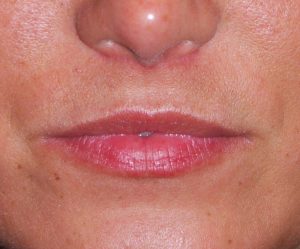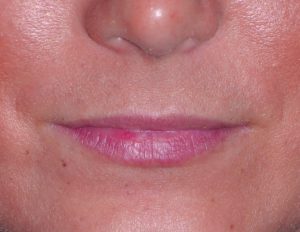
Like all rejuvenative facial procedures their effects are known to decrease over time. Aging and gravity will lessen any lifting procedure, it is only a question of how much and over what length of time. In the subnasal lip lift previous studies have shown that there is some immediate deterioration of the effects in the first 6 to 12 months after the procedure. Based on these previous studies this is why I always tell patients to expect about 25% relapse of the lifted upper lip in the short term. One would expected the lifted result to be lessened even further with more time but those changes have not been quantitated.
In the October 2021 issue of the Facial Plastic Surgery & Aesthetic Medicine journal, an article on this topic was published entitled ‘Rejuvenating the Aging Upper Lip: The Longevity of the Subnasal Lip Lift Procedure.’ In this paper the authors looked at the long term outcomes of a 5mm subnasal lip lift in over fifty patients (52) Before and after surgery measurements were made of the nasal base to upper vermilion-cutaneous border (along the philtral column) as well as the vertical vermilion height of the upper lip. The longevity outcomes were determined by the % retention of the lift (philtral length measurements) and persistent of vermilion height improvement.
Their results showed that there was a slow decline over time of the amount of skin reduction between the nose and the upper lip as well as in the amount of vermilion show. The average percent of vermilion show improvement was 48% at less than five years out from surgery while it dropped to 40% beyond five years.
It is no surprise that the subnasal lip lift procedure does undergo some loss of the initial result over time as most soft tissue facial structures go south with age. But these changes are not complete and roughly half of the result is maintained years later. This information will also give some comfort to those patients which I occasionally see who have had an over aggressive subnasal lip lift with a resultant A frame deformity. With time the lips will relax somewhat making it look less pulled up.
Dr. Barry Eppley
Indianapolis, Indiana




